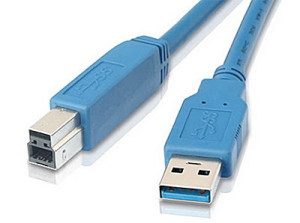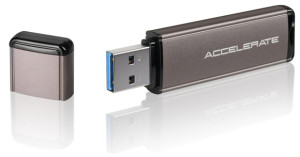 More and more high-end multimedia and storage devices are developed and introduced into the market and, as they all use USB technology, the USB 2.0 connection speed is simply not enough. Today, with over 6 billion ports sold, the USB 2.0 is as popular as it was it was a few years ago, when it appeared on the market. But we do need a higher transfer speed USB protocol for our new high media pixel digital camera, terabyte storage devices or multi-gigabyte mobile phones. With its theoretical speed of 480 Mbps, but actual maximum 320 Mbps connection, the USB 2.0 is obsolete.
More and more high-end multimedia and storage devices are developed and introduced into the market and, as they all use USB technology, the USB 2.0 connection speed is simply not enough. Today, with over 6 billion ports sold, the USB 2.0 is as popular as it was it was a few years ago, when it appeared on the market. But we do need a higher transfer speed USB protocol for our new high media pixel digital camera, terabyte storage devices or multi-gigabyte mobile phones. With its theoretical speed of 480 Mbps, but actual maximum 320 Mbps connection, the USB 2.0 is obsolete.
And so, USB 3.0 protocol comes into our attention.
The USB 3.0 memory drive or other high-end media devices is offering the bigger bandwidth so needed by every normal or power end-user. Able to reach speeds of 5Gbits per second, the USB 3.0, introduced in 2008, added a new transfer mode called Super Speed, 10 times faster than the USB 2.0 or the equivalent of a digital data full CD per second. The USB 3.0 ports are made with dual-bus architecture, meaning that both USB 2.0 and USB 1.1 are fully compatible with it. The actual differences between devices using the USB 3.0 and other ones are the protocol and the electrical interface, so just plug-in any old or new USB device you may have and it will work. Of course, none your USB 2.0 flash drives will not be as fast as a USB 3.0 memory drive, even if you plug them into a 3.0 port. If plug-in a USB 3.0 memory drive into a USB 2.0 port, you will not see any pop-up balloon saying that “Your device can run faster if you plug it into a SuperSpeed port”.
The first USB 3.0 end-user devices
The first USB 3.0 end-user devices were announced and shipped by Buffalo Technology in November 2009 and the first certified USB 3.0 consumer products were announced January 5th 2010, at the Las Vegas Consumer Electronics Show, along with two motherboards by ASUS and Gigabyte Technology. Among the manufacturers of USB 3.0 host controllers we can point out Texas Instruments, Renesas Electronics, Nvidia, ASMedia Technology, Fresco Logic, Etron, VIA Technologies and NEC.
 In September14th 2009, Freecom announced a USB 3.0 external hard drive and on January 4th 2010, Seagate announced a small portable HDD with PC Card for laptops. In 2011, Toshiba presented the first laptop that included USB 3.0 and Bluetooth 3.0, called Toshiba Qosmio X500, and Sony released the new series of Sony VAIO laptops that included USB 3.0. From April 2011, the Inspiron and Dell XPS series are also available with USB 3.0 ports.
In September14th 2009, Freecom announced a USB 3.0 external hard drive and on January 4th 2010, Seagate announced a small portable HDD with PC Card for laptops. In 2011, Toshiba presented the first laptop that included USB 3.0 and Bluetooth 3.0, called Toshiba Qosmio X500, and Sony released the new series of Sony VAIO laptops that included USB 3.0. From April 2011, the Inspiron and Dell XPS series are also available with USB 3.0 ports.
Also, the Linux supports USB 3.0 since version 2.6.31, which was released in September 2009, and Windows 8 is the first Microsoft operating system to offer built-in support for USB 3.0.
So, bigger bandwidth of up to 5Gbits per second, faster device identification, improved power and management efficiency, increased capability of power supply to USB devices, plus optical and traditional USB-wired interconnections are the main attributes of the USB 3.0 technology ports and devices.
